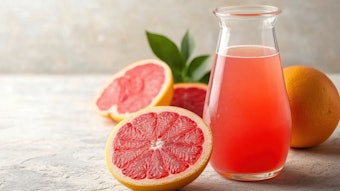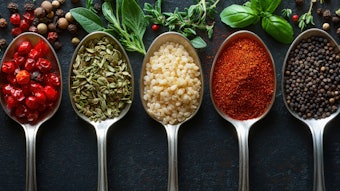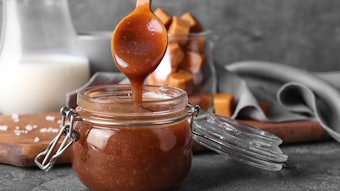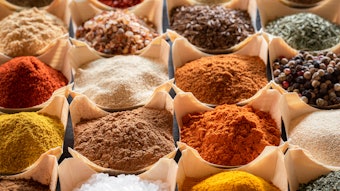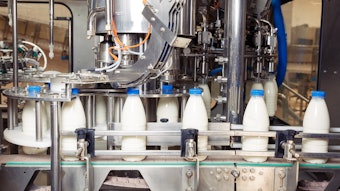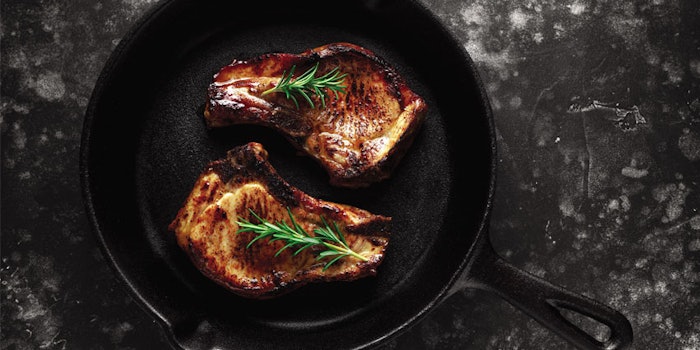
Pyrazine notes are useful in a very wide range of flavors, most obviously where there is an intention to convey the effect of a heating process. The most effective dominant pyrazine will vary with the flavor type, but there is always room for a little of the sheer aggression of 2-methyl pyrazine (FEMA# 3309, CAS# 109-08-0). This bright and diffusive chemical is primarily roasted in character, with more than a hint of peanut. It can be used in conjunction with most other pyrazines but is especially effective when used with 2,5-dimethyl pyrazine and trimethyl pyrazine.
Note that the dose rates given throughout this article are the levels suggested for use in flavors intended to be dosed at 0.05% in ready-to-drink beverages or in a simple bouillon.
Meat Flavors
Bacon: One hundred ppm of 2-Methyl pyrazine lifts bacon flavors without accentuating burnt notes.
Roast beef: A much higher level, in the region of 400 ppm, is equally effective in roast beef flavors, accentuating the freshly roasted note.
Roast chicken: Roast chicken is in a more subtle category than roast beef. The ideal level of addition of 2-Methyl pyrazine varies, but 60 ppm is a reasonable starting point.
Ham: The ideal level of addition also varies in ham flavors, depending on the style but 50 ppm works well.
Lamb: Higher levels, around 400 ppm, can work in lamb flavors but, in my opinion, 100 ppm is more subtle and effective.
Pork: Pork flavors are also well served by 100 ppm of 2-Methyl pyrazine, with a noticeable enhancement of the freshly roasted character.
For the full article, please check out the Perfumer & Flavorist+ May 2021 issue.





